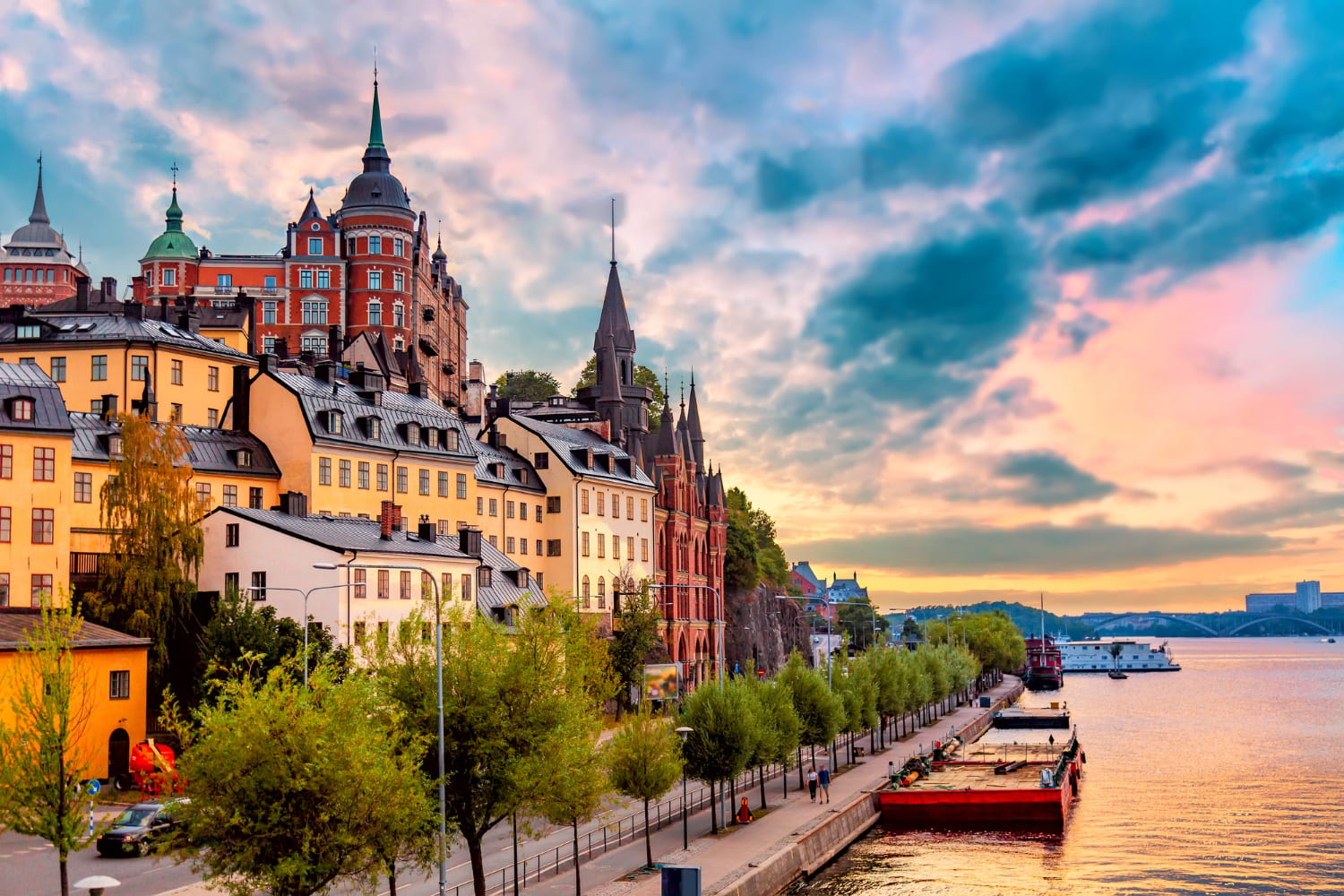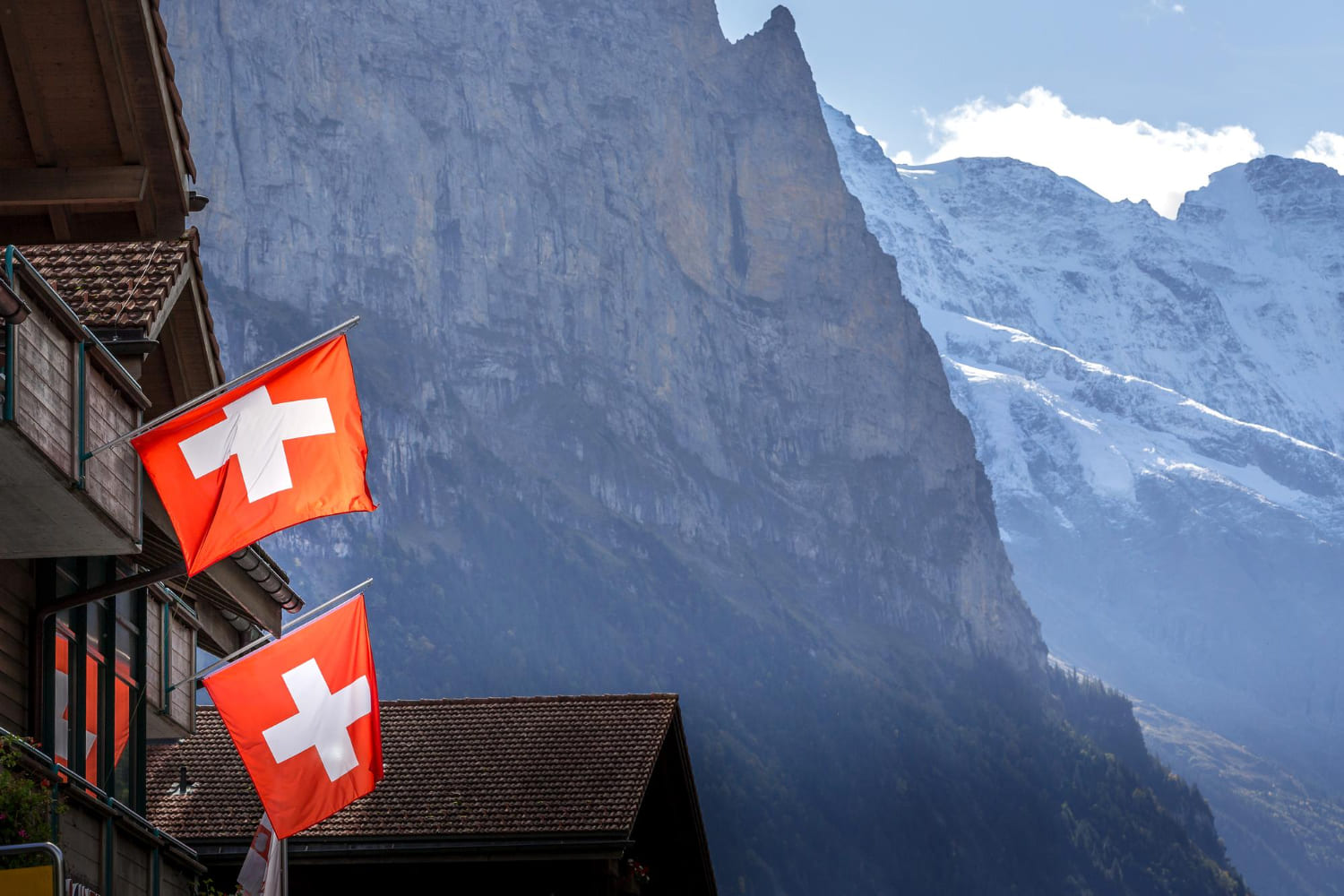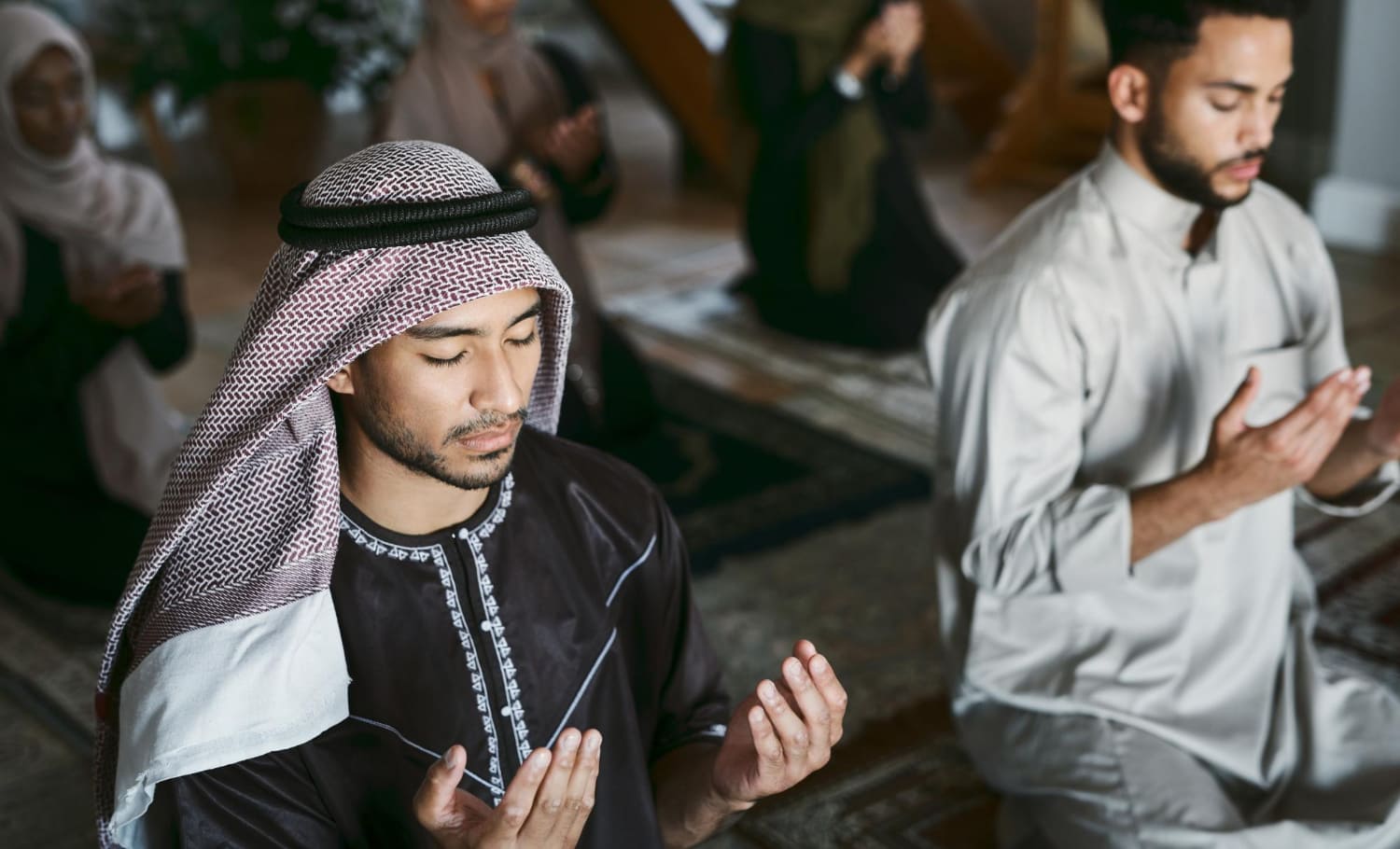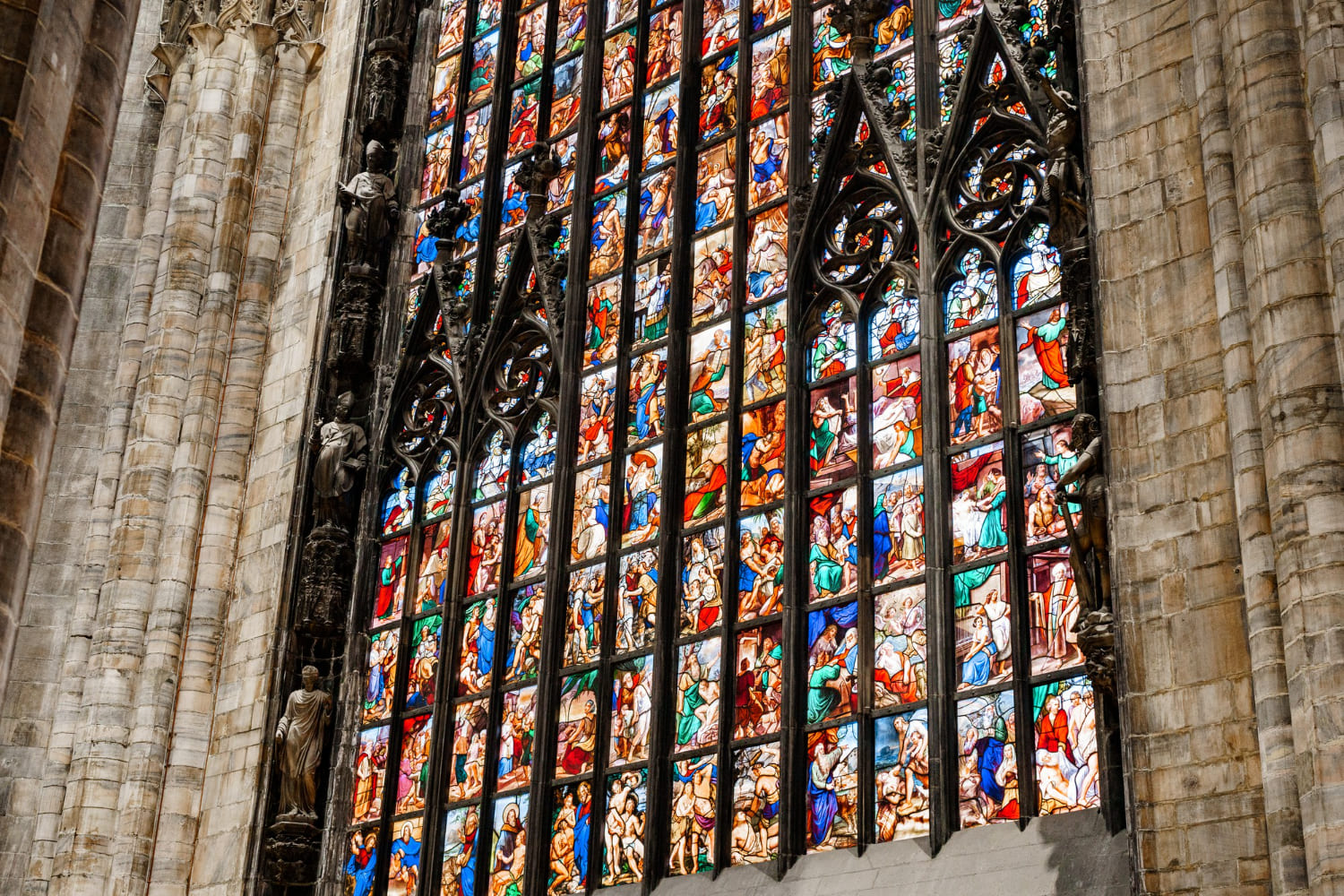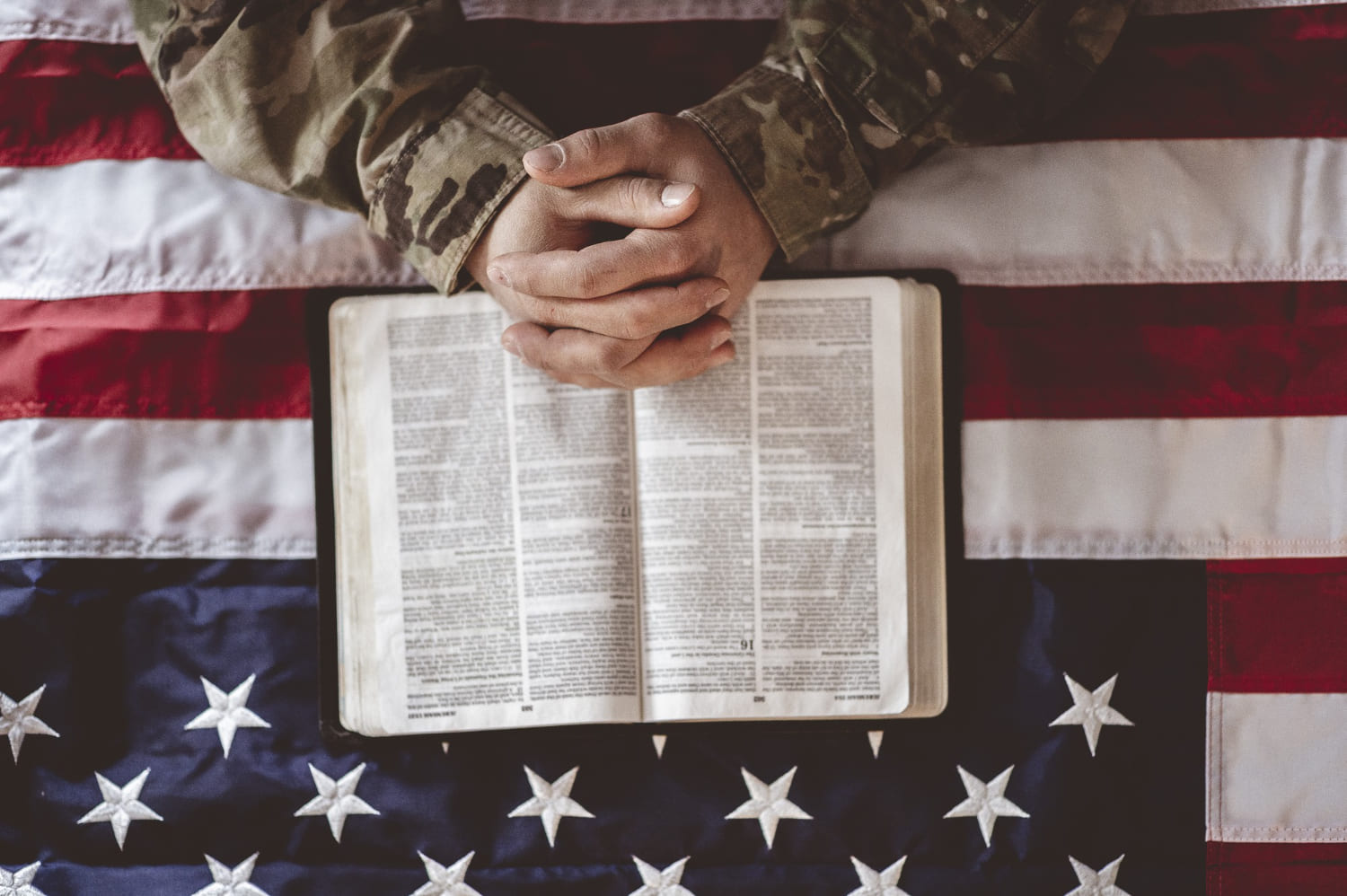India is a country with a rich history of religious diversity and pluralism.
The Indian subcontinent is the birthplace of four major religions, namely Hinduism, Buddhism, Jainism, and Sikhism.
These religions, collectively known as Dharmic religions, represent around 83% of the total population of India.
Apart from these, India is also home to several other religions, including Islam, Christianity, Zoroastrianism, Judaism, and Baha’i.
Religion plays a significant role in the lives of Indians, and the country has a long history of religious tolerance and co-existence.
The Constitution of India guarantees freedom of religion to all its citizens and prohibits discrimination on the basis of religion.
India is also known for its vibrant religious festivals and celebrations, which are celebrated with great enthusiasm across the country.
Despite occasional incidents of religious violence, India remains a country where people of different religions live together in harmony and respect each other’s beliefs and traditions.
- Major Religions In India
- Hinduism
- Islam
- Christianity
- Sikhism
- Buddhism
- Jainism
- Regional Distribution of Religions
- Demographics and Statistics
- Population Proportions
- Growth Trends
- Geographic Concentrations
- Minor and Tribal Religions
- Zoroastrianism
- Judaism
- Baha’i Faith
- Tribal Religions
- Historical Overview of Religions in India
- Religious Festivals and Holidays
- Interfaith Relations and Dialogue
- Government and Legal Status
- Constitutional Rights
- Personal Law Systems
- Religious Education and Institutions
- Influence on Culture and Society
- Contemporary Issues and Challenges
Major Religions In India
India is known for its diverse religious landscape, with a variety of religions being practiced in the country.
The major religions of India are Hinduism, Islam, Christianity, Sikhism, Buddhism, and Jainism.
Hinduism
Hinduism is the largest religion in India, with over 79% of the population identifying as Hindus. It is a polytheistic religion that originated in the Indian subcontinent over 5,000 years ago.
Hinduism is characterized by a wide range of beliefs and practices, including the worship of multiple deities, the caste system, and the concept of karma.
Islam
Islam is the second-largest religion in India, with around 14.2% of the population being Muslims. It is a monotheistic religion that originated in the Arabian Peninsula in the 7th century.
Islam is based on the teachings of the Prophet Muhammad and emphasizes the importance of prayer, charity, and the pilgrimage to Mecca.
Christianity
Christianity is the third-largest religion in India, with around 2.3% of the population being Christians.
It is a monotheistic religion that originated in the Levant in the 1st century AD. Christianity is based on the life and teachings of Jesus Christ and emphasizes the importance of love, forgiveness, and salvation.
Sikhism
Sikhism is the fourth-largest religion in India, with around 1.7% of the population being Sikhs. It is a monotheistic religion that originated in the Punjab region of India in the 15th century.
Sikhism is based on the teachings of the ten Sikh gurus and emphasizes the importance of meditation, selfless service, and equality.
Buddhism
Buddhism is the fifth-largest religion in India, with around 0.7% of the population being Buddhists. It is a non-theistic religion that originated in ancient India in the 6th century BC.
Buddhism is based on the teachings of Siddhartha Gautama, also known as the Buddha, and emphasizes the importance of mindfulness, compassion, and the elimination of suffering.
Jainism
Jainism is the sixth-largest religion in India, with around 0.4% of the population being Jains. It is a non-theistic religion that originated in ancient India in the 6th century BC.
Jainism is based on the teachings of Mahavira and emphasizes the importance of non-violence, truthfulness, and the elimination of attachment.
Overall, the major religions of India reflect the country’s rich cultural and religious heritage.
While each religion has its own unique beliefs and practices, they all share a common goal of promoting peace, harmony, and spiritual growth.
Regional Distribution of Religions
India is a country with diverse religious beliefs and practices.
The religious composition of India has been fairly stable since the 1947 partition that divided the Indian subcontinent into Hindu-majority India and Muslim-majority Pakistan.
Hindus make up the majority of the population, accounting for 79.5% of the total population.
Muslims are the second-largest religious group, comprising 14.2% of the population.
Christians, Sikhs, Buddhists, Jains, and other religions make up the remaining 6.3% of the population.
The regional distribution of religions in India is not uniform. The northern states of India have a higher percentage of Hindus, while the northeastern states have a higher percentage of Christians.
The western and northern states have a higher percentage of Muslims, while the southern states have a higher percentage of Buddhists and Jains.
There are also regional variations in the practice of religion.
For example, in the western state of Gujarat, the majority of the population practices Hinduism, while in the neighboring state of Maharashtra, the majority of the population practices Islam.
In the northeastern state of Mizoram, the majority of the population practices Christianity, while in the neighboring state of Manipur, the majority of the population practices Hinduism.
The table below shows the regional distribution of religions in India based on the 2011 Census:
| Region | Hinduism | Islam | Christianity | Sikhism | Buddhism | Jainism | Other Religions |
|---|---|---|---|---|---|---|---|
| North | 80.3% | 14.9% | 1.0% | 1.4% | 0.1% | 0.1% | 2.2% |
| East | 70.5% | 27.4% | 0.9% | 0.3% | 0.2% | 0.1% | 0.6% |
| West | 79.8% | 11.5% | 2.3% | 1.2% | 0.1% | 0.1% | 4.9% |
| South | 62.6% | 10.8% | 3.2% | 1.6% | 18.2% | 0.2% | 3.3% |
| Northeast | 19.4% | 34.2% | 3.7% | 1.6% | 0.2% | 0.1% | 40.7% |
As can be seen from the table, the northern region has the highest percentage of Hindus, while the northeastern region has the highest percentage of Muslims.
The southern region has the highest percentage of Buddhists and Jains, while the western region has the highest percentage of Christians.
In conclusion, the regional distribution of religions in India is diverse and varies from region to region.
Hindus are the majority religious group in India, followed by Muslims.
The northeastern region has a higher percentage of Christians, while the southern region has a higher percentage of Buddhists and Jains.
The western and northern regions have a higher percentage of Muslims.
Demographics and Statistics
Population Proportions
India is known for its diverse religious landscape, with many different faiths coexisting within its borders.
According to the 2011 census, Hinduism is the largest religion in India, with approximately 79.8% of the population identifying as Hindu.
Islam is the second-largest religion, with about 14.2% of the population identifying as Muslim.
Christianity, Sikhism, Buddhism, and Jainism are other significant religions in India, with 2.3%, 1.7%, 0.7%, and 0.4% of the population identifying with these religions, respectively.
Zoroastrianism, Judaism, and Sanamahism also have a presence in India, with several thousand adherents.
Growth Trends
India’s population has grown significantly over the past several decades. India’s population has more than tripled since the 1951 census, from 361 million people to over 1.2 billion people in 2011.
Despite the rapid population growth, India’s fertility rate has been declining in recent decades. In 1992, the fertility rate was 3.4, while in 2019 it decreased to 2.2.
This rate is higher than many economically advanced countries such as the United States, but much lower than India’s fertility rate in 1950, which was 5.9.
Geographic Concentrations
Religious groups in India are not evenly distributed across the country. Hindus are the majority in most states, with the exception of Jammu and Kashmir, where Muslims are the majority.
Muslims are the majority in the Union Territory of Lakshadweep. Christians are the majority in the Union Territory of Puducherry, while Sikhs are the majority in the state of Punjab.
Buddhists are the majority in the Union Territory of Ladakh, while Jains are the majority in the Union Territory of Dadra and Nagar Haveli and Daman and Diu.
Minor and Tribal Religions
India is a land of diversity, and this diversity can be seen in the country’s religious beliefs and practices.
Apart from the major religions such as Hinduism, Islam, Christianity, and Sikhism, there are also many minor and tribal religions that are practiced in India.
These religions have a small following but are an essential part of the country’s cultural heritage.
Zoroastrianism
Zoroastrianism, also known as Parsiism, is one of the oldest religions in the world. It was founded by the Persian prophet Zoroaster in the 6th century BCE.
Today, there are around 60,000 Zoroastrians in India, most of whom live in Mumbai and Gujarat. The religion is based on the belief in one God, Ahura Mazda, and the teachings of Zoroaster.
Zoroastrians worship in fire temples and follow strict purity laws.
Judaism
Judaism has a long and rich history in India. The first Jews arrived in India over 2,000 years ago, and today there are around 5,000 Jews living in the country.
Most of them live in Mumbai, where they have built synagogues and schools. The religion is based on the belief in one God, and the teachings of the Torah.
Jews in India follow the same religious practices as Jews around the world, including observing the Sabbath and keeping kosher.
Baha’i Faith
The Baha’i Faith is a relatively new religion that was founded in Iran in the 19th century.
Today, there are around 2 million Baha’is in India. The religion is based on the belief in one God and the teachings of Baha’u’llah, the founder of the faith.
Baha’is believe in the unity of all religions and the essential oneness of humanity. They worship in local Baha’i centers and follow a set of ethical and moral principles.
Tribal Religions
India is home to over 700 tribal groups, each with their own unique culture and religious beliefs.
These tribal religions are often animistic in nature, meaning they believe that everything in the world has a spirit or soul.
Some of the most prominent tribal religions in India include Santhal, Gond, and Bhil. These religions are often passed down through oral tradition and are an integral part of the tribal way of life.
In conclusion, India’s religious landscape is diverse and complex, with many minor and tribal religions coexisting alongside the major religions.
Each of these religions has its own unique beliefs and practices, and they are an essential part of India’s cultural heritage.
Historical Overview of Religions in India
India is a country of diverse religions, with a rich history of religious diversity and tolerance.
Hinduism is the oldest and most widely practiced religion in India, dating back to the Indus Valley Civilization around 2500 BCE.
Buddhism, Jainism, and Sikhism are other major religions that originated in India, collectively known as Dharmic religions.
Islam, Christianity, and Judaism are the other major religions in India that were introduced later through trade and conquest.
Throughout India’s history, religion has been an integral part of the country’s culture, shaping its art, architecture, literature, and social customs.
The ancient Indian texts, such as the Vedas, Upanishads, and Puranas, are an important source of knowledge about the country’s religious and cultural heritage.
Over the centuries, India has witnessed the rise and fall of various empires and dynasties, each leaving its mark on the country’s religious landscape.
For example, the Mauryan Empire under Emperor Ashoka was instrumental in the spread of Buddhism across India and beyond, while the Mughal Empire under Emperor Akbar promoted religious tolerance and harmony.
Today, India is home to a diverse range of religious communities, with Hindus comprising the majority of the population at around 79%.
Muslims, Christians, Sikhs, Buddhists, and Jains are the other major religious communities in India, each with their own unique customs, traditions, and beliefs.
Overall, India’s religious diversity and tolerance are a testament to its rich cultural heritage and its people’s ability to coexist peacefully despite their differences.
Religious Festivals and Holidays
India is a land of diverse cultures and religions. The country is known for its vibrant and colorful festivals, which are celebrated with great enthusiasm and zeal.
The people of India celebrate a plethora of religious festivals and holidays throughout the year.
One of the most popular festivals in India is Diwali, also known as the Festival of Lights. It is celebrated in the month of October or November and marks the victory of good over evil.
During Diwali, people light up their homes with diyas (oil lamps), decorate their houses, and burst firecrackers.
Another significant festival is Holi, also known as the Festival of Colors. It is celebrated in the month of March and marks the arrival of spring.
During Holi, people throw colored powder and water at each other, dance to the beat of drums, and enjoy delicious sweets.
Apart from these, there are several other festivals celebrated in India, such as Eid, Christmas, Guru Nanak Jayanti, Dussehra, and many more.
These festivals bring people together, irrespective of their religion, caste, or creed, and foster a sense of unity and brotherhood.
In addition to festivals, there are several holidays celebrated in India, such as Independence Day, Republic Day, Gandhi Jayanti, and many more.
These holidays are celebrated with great patriotism and pride, and people pay homage to the great leaders who fought for India’s freedom.
Overall, India is a country that celebrates diversity and unity through its festivals and holidays.
Interfaith Relations and Dialogue
India is known for its diverse religious landscape, with Hinduism, Islam, Christianity, Sikhism, Buddhism, Jainism, and Zoroastrianism being the major religions.
Despite the diversity, India has a long history of interfaith relations and dialogue.
Interfaith dialogue in India refers to the process of communication and understanding between people of different faiths.
It aims to promote mutual respect, understanding, and cooperation among different religious communities.
Interfaith dialogue is important in India because it helps to promote peace and harmony among the diverse religious communities in the country.
One of the most significant interfaith initiatives in India is the Interfaith Harmony Conclave.
This initiative brings together leaders and representatives from different religious communities to discuss issues related to interfaith relations and dialogue.
The initiative has helped to promote greater understanding and cooperation among different religious communities in India.
Another important initiative is the National Foundation for Communal Harmony (NFCH), which was established in 1992.
The NFCH aims to provide assistance to victims of communal violence and to promote communal harmony and national integration.
The foundation also supports various interfaith initiatives and programs across the country.
In recent years, there has been a growing emphasis on interfaith dialogue in India.
This is reflected in the efforts of religious leaders and organizations to promote greater understanding and cooperation among different religious communities. Interfaith dialogue is seen as an important tool for promoting peace, harmony, and social cohesion in India.
Government and Legal Status
Constitutional Rights
India is a secular country with a constitution that guarantees religious freedom to all its citizens. The Constitution of India recognizes and protects the freedom of religion as a fundamental right.
Article 25 to 28 of the Indian Constitution provides for the right to freedom of religion, which includes the right to profess, practice, and propagate any religion of choice.
The Indian government has also established various institutions to protect the religious rights of its citizens.
The National Commission for Minorities (NCM) is one such institution that safeguards the constitutional rights of religious minorities in India.
The NCM was established under the National Commission for Minorities Act, 1992, and it has the power to investigate and monitor matters relating to the constitutional safeguards for minorities.
Personal Law Systems
India has a unique personal law system that governs the personal affairs of different religious communities. The personal law system is based on religious scriptures, customs, and traditions.
The personal laws of different religious communities in India are recognized and enforced by the Indian legal system.
The personal law system in India applies to matters such as marriage, divorce, inheritance, and adoption.
For example, the Hindu Marriage Act, 1955, governs the marriage and divorce of Hindus in India. Similarly, the Muslim Personal Law (Shariat) Application Act, 1937, governs the personal affairs of Muslims in India.
In conclusion, India has a secular constitution that guarantees religious freedom to all its citizens.
The Indian government has established various institutions to protect the religious rights of its citizens.
India also has a unique personal law system that governs the personal affairs of different religious communities.
Religious Education and Institutions
India is home to a plethora of religious institutions and educational centers that cater to the diverse religious needs of the population.
These institutions range from traditional Gurukuls to modern universities, and they offer various courses and programs related to religion.
One of the most prominent religious institutions in India is the Banaras Hindu University (BHU), located in the holy city of Varanasi.
BHU is a public university that offers courses in Hinduism, Buddhism, Jainism, and other related subjects.
Another notable institution is the Aligarh Muslim University, which offers courses in Islamic Studies, Arabic, Persian, and Urdu.
Apart from universities, India also has several religious schools and centers that provide education and training in various aspects of religion.
For example, the Ramakrishna Mission, founded by Swami Vivekananda, is a spiritual organization that runs schools, colleges, and hospitals across India.
The Art of Living Foundation, founded by Sri Sri Ravi Shankar, is another prominent organization that offers courses in meditation, yoga, and spirituality.
Religious education in India is not limited to formal institutions. Many religious leaders and gurus offer spiritual guidance and education through their ashrams and centers.
These centers attract thousands of devotees from all over the world who seek spiritual enlightenment and guidance.
Overall, India’s rich religious heritage has led to the development of a diverse and vibrant ecosystem of religious institutions and educational centers.
These institutions play a crucial role in preserving and promoting the country’s religious traditions and values.
Influence on Culture and Society
India is a country with a rich history and diverse culture, and religion has played a significant role in shaping its society.
Most of the people in India are followers of Hinduism, which is considered to be the oldest religion in the world. Hinduism has had a profound influence on Indian culture, art, music, and literature.
The caste system, which is unique to Hinduism, has also had a significant impact on Indian society.
Apart from Hinduism, India is also home to several other religions, including Islam, Christianity, Sikhism, Buddhism, and Jainism, among others.
Each of these religions has contributed to the diversity of Indian culture and society.
For instance, Islam has influenced Indian cuisine, music, and architecture, while Christianity has contributed to the education system and healthcare services in the country.
Religion has also played a vital role in shaping the social and political landscape of India.
Several political parties in India have their roots in religious ideologies, and religious leaders have often played a crucial role in shaping public opinion.
However, religion has also been a source of conflict in India, with instances of communal violence and religious discrimination being reported from time to time.
Despite these challenges, religion continues to be an integral part of Indian society.
The country’s secular constitution guarantees the freedom of religion to all its citizens, and the government has taken several steps to promote religious harmony and tolerance.
As a result, India remains a vibrant and diverse society, where people of different religions coexist peacefully.
Contemporary Issues and Challenges
India is known for its religious diversity, but it is not without its challenges. One of the most pressing issues is communal violence, which has been a recurring problem in the country.
In recent years, there have been instances of religiously motivated violence, including attacks on places of worship and communal riots.
This has often been fueled by political and economic factors, as well as deep-seated religious and cultural differences.
Another issue that has arisen in recent years is the rise of Hindutva, a right-wing Hindu nationalist ideology that seeks to promote the dominance of Hindus in Indian society.
This has led to concerns about the marginalization of religious minorities, particularly Muslims, who make up around 14% of the population.
Critics argue that Hindutva has led to a rise in hate speech and discrimination against Muslims, and has contributed to a climate of intolerance and hostility.
Another challenge facing India is the issue of religious conversion.
While the Indian Constitution guarantees freedom of religion, there have been instances where religious minorities have been forcibly converted to Hinduism.
This has led to concerns about the erosion of religious freedom in the country.
Overall, while India is known for its religious diversity, it is not without its challenges.
The country must continue to work towards promoting religious tolerance and understanding, and addressing the underlying social, economic, and political factors that contribute to communal violence and discrimination.


